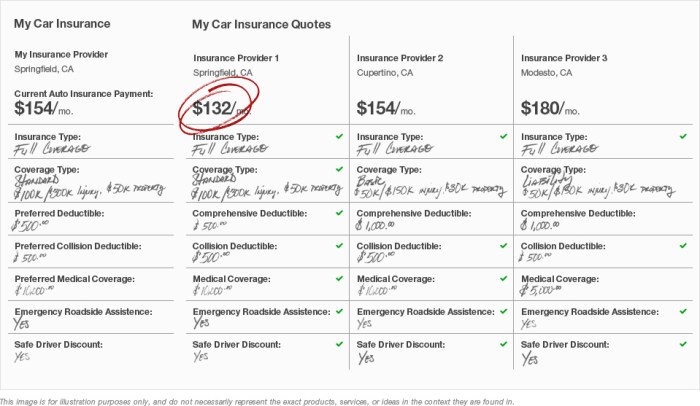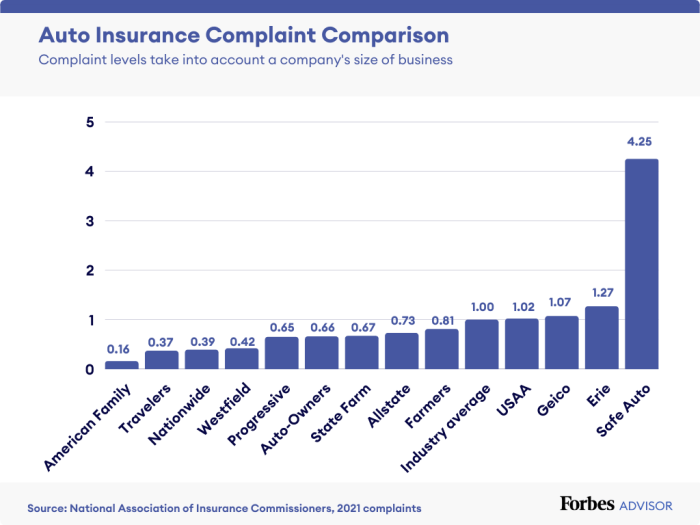Securing affordable auto insurance is a crucial financial decision for every driver. This guide delves into the multifaceted world of auto insurance pricing, exploring the key factors that influence premiums and offering practical strategies to help you find the best deals. We’ll examine everything from your driving history and credit score to the type of car you drive and the coverage you choose, providing a clear path towards significant savings.
Understanding how insurance companies calculate your premiums is the first step to securing the best possible rate. We’ll break down the complex factors involved, providing actionable insights and empowering you to make informed choices. From comparing quotes and negotiating rates to understanding coverage options and maximizing discounts, this guide equips you with the knowledge to navigate the insurance landscape confidently.
Factors Influencing Auto Insurance Costs

Securing the best auto insurance rates involves understanding the various factors that insurance companies consider when calculating premiums. These factors can significantly impact the final cost, and being aware of them allows for better planning and potentially lower premiums.
Age and Insurance Premiums
Younger drivers typically pay higher insurance premiums than older drivers. This is because statistically, younger drivers are involved in more accidents. Insurance companies assess risk based on this data. As drivers gain experience and reach a certain age (usually around 25), their accident rates decrease, leading to lower premiums. Conversely, premiums may increase again in very advanced age, as reaction times and driving abilities may decline.
Driving History’s Impact on Insurance Rates
A clean driving record is crucial for obtaining favorable insurance rates. Accidents, traffic violations (such as speeding tickets or DUIs), and at-fault accidents significantly increase premiums. The severity of the incident directly correlates with the premium increase. For instance, a minor fender bender will likely result in a smaller increase than a serious accident causing injury or significant property damage. Maintaining a clean driving record is the most effective way to keep insurance costs low.
Insurance Costs for Different Car Models
The make, model, and year of your vehicle significantly influence your insurance premiums. Luxury cars and high-performance vehicles generally cost more to insure due to higher repair costs and a greater likelihood of theft. Conversely, smaller, less expensive cars typically have lower insurance premiums. Features like anti-theft systems and safety ratings also play a role; vehicles with advanced safety features may receive discounts. For example, a Tesla Model 3 might have a higher premium than a Honda Civic due to its higher repair costs and potential for more extensive damage in an accident.
Location’s Influence on Insurance Prices
Geographic location is a key factor in determining insurance costs. Areas with higher crime rates, more traffic congestion, and a higher frequency of accidents tend to have higher insurance premiums. Urban areas often have higher rates than rural areas due to increased risk factors. For instance, someone living in a large metropolitan city like New York City will likely pay more for car insurance than someone living in a rural town in Montana.
Credit Score and Insurance Premiums
In many states, insurance companies use credit-based insurance scores to assess risk. A higher credit score generally translates to lower insurance premiums, while a lower score indicates a higher risk and therefore higher premiums. This is based on the correlation between credit history and claims behavior. It’s important to note that this practice is not universal and varies by state.
Comparison of Insurance Costs for Different Coverage Levels
The following table compares estimated annual insurance costs for different coverage levels. These are illustrative examples and actual costs will vary based on the factors previously discussed.
| Coverage Level | Liability Only | Liability + Collision | Liability + Collision + Comprehensive |
|---|---|---|---|
| Estimated Annual Cost | $500 | $800 | $1000 |
Final Summary

Finding the best auto insurance prices isn’t just about saving money; it’s about securing the right level of protection for yourself and your vehicle. By understanding the factors influencing your premiums, employing effective comparison strategies, and leveraging available discounts, you can significantly reduce your insurance costs without compromising on essential coverage. Take control of your insurance expenses and drive with confidence, knowing you’ve secured the best possible value.
Questions and Answers
What is the difference between liability and collision coverage?
Liability coverage protects you if you cause an accident, paying for the other person’s damages. Collision coverage pays for repairs to your car, regardless of who caused the accident.
How often should I shop for car insurance?
It’s wise to compare rates annually, as prices can fluctuate. Life changes like marriage, a new home, or a new car can also affect your rates.
Can I get my insurance cancelled for minor traffic violations?
While one minor violation might not lead to cancellation, multiple violations or serious offenses could increase your premiums significantly or even result in cancellation.
What is a SR-22 form and when is it required?
An SR-22 is a certificate of insurance proving you have the minimum liability coverage required by your state. It’s often required after a serious driving offense.